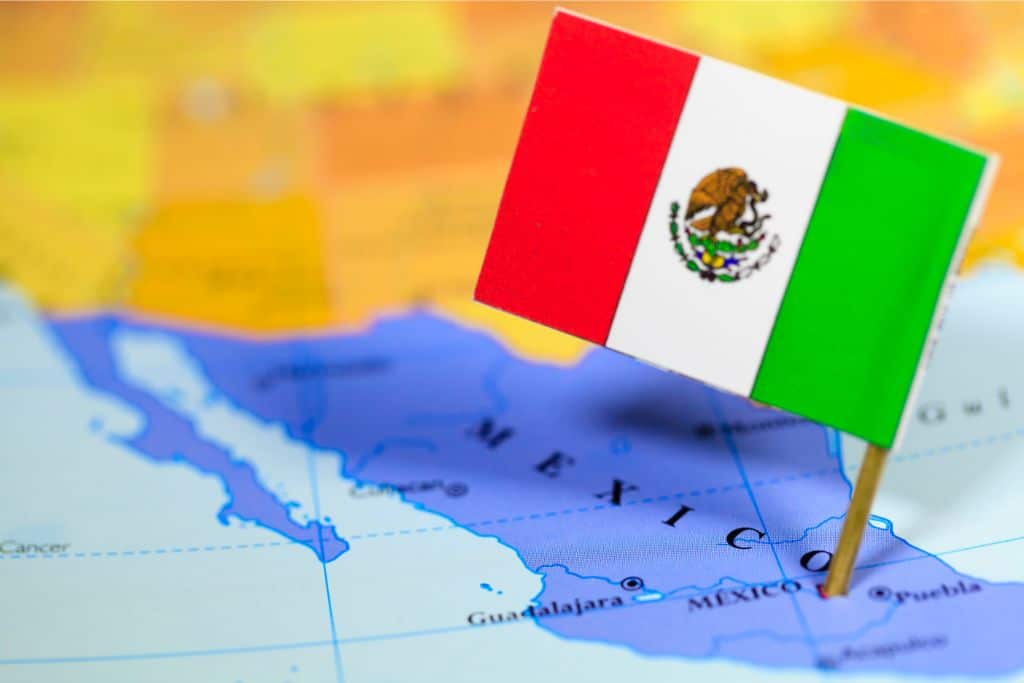Where To Retire In Mexico: 11 Best Places With Pros & Cons
This post contains affiliate links. If you purchase something through one of our links, we may receive a small commission at no extra cost to you. Read more in our privacy policy.
We fell in love with Mexico this past year after a 3-month, 10,000-mile motorcycle trip throughout the country. Touching down in 30+ cities, towns and villages gave us a first-hand overview of where to retire in Mexico.
If you’ve been considering Mexico as a place to retire, this is my boots-on-the-ground perspective of the 11 best places, with pros and cons, that might suit your lifestyle and your wallet.
But prior to this trip, I did lots of research and one of the most reliable resources is my membership to International Living.
The website content, daily email updates, and magazine is written specifically for those living and traveling abroad, part-time or full-time. Articles written by ex-pats themselves give you a realistic view of what to expect; the good and the bad.
The International Living membership is reasonably priced and they throw in a Retirement Bonus Index that profiles locations worldwide. They’ve done the legwork so you and I don’t have to.
🌴 Sign up for International Living’s Global Retirement Index 🌴
Where To Retire In Mexico
Where to retire in Mexico? That’s a loaded question because there are so many beautiful and safe areas, from beach towns to colonial cities. But remember, what you’re looking for in a potential new place to live is quite different from what’s on your vacation bucket list.
What someone views as a PRO may seem like a CON to others and vice versa. But here’s my point of view on 11 diverse Mexican locations that may change your life.
1. Ajijic

Perched on Lake Chapala in the western part of Mexico, Ajijic (pronounced “ah-he-heek”) is an ex-pat mecca. Lots of Canadians and Americans make this town their part-time or full-time residence.
👍PROS If you want an easy transition into Mexican life, this would be a good choice. English is spoken just about everywhere and the climate is temperate year-round. Its close proximity to Guadalajara (Mexico’s second-largest city) means flights and medical care are accessible.
The historical part of town fronts the lake with a beautiful view and a very walkable promenade. The outskirts of town has modern stores and all the practical amenities needed for a first-world lifestyle.
👎CONS If you want a more Mexican cultural immersion, this isn’t it. With English commonly spoken and English menus everywhere, you won’t be forced to learn Spanish. The lake doesn’t really provide beach or swimming access; it’s more for admiring.
Because of the heavy ex-pat community, prices tend to be higher than in other towns I visited. An adorable B&B room with air conditioning cost $125/night. That’s a little high for my blood, as one of my criteria for an abroad location is lower lodging costs.
2. Ensenada
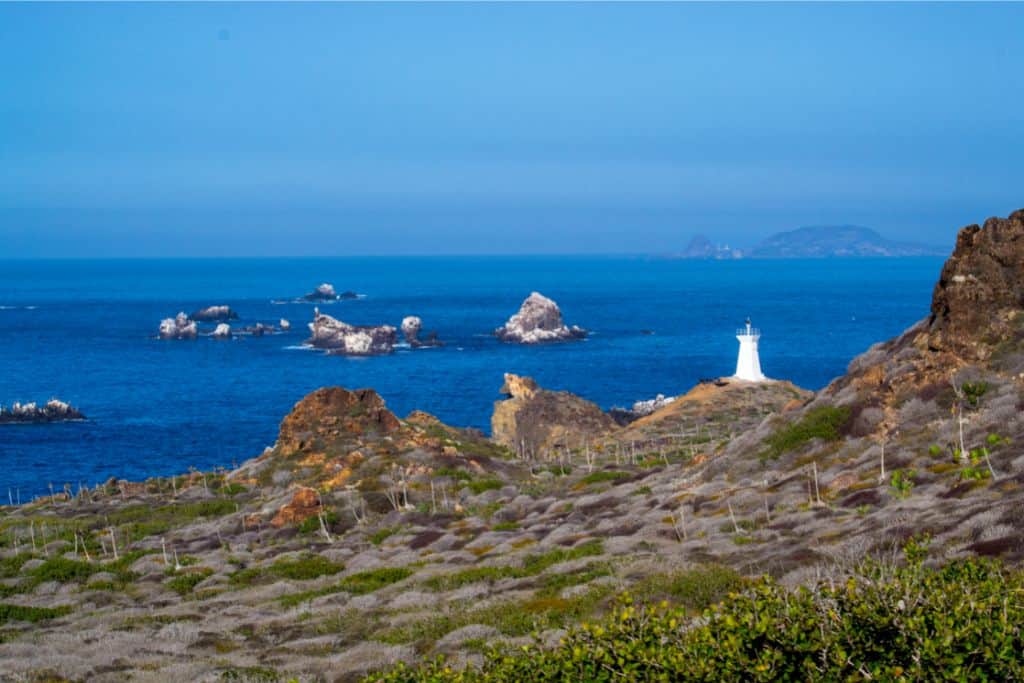
Located just 70 miles south of the US border, Ensenada, in the Baja peninsula, feels like Mexico but with a nod to America.
👍PROS If you still want all the traditional amenities and are not quite ready to make the big cultural leap, then this may be the ticket. It’s a modern city with prompt, excellent healthcare services (which we experienced), great restaurants, and easily accessible to the US by car.
Though very urban and a popular weekend destination for Californians, you have the diversity of the desert landscape available just outside of town. This could be a good “starter” location for testing out where to retire in Mexico.
👎CONS Those PRO reasons may be the same reasons this isn’t for you. It feels Americanized (as much of Baja does) so if you’re looking for deeper Mexican culture, this may not be your thing.
English abounds and it seems like you’re straddling two cultures because, well, you really are. You can view this as a positive or a negative; it just depends on what you’re looking for.
3. Loreto
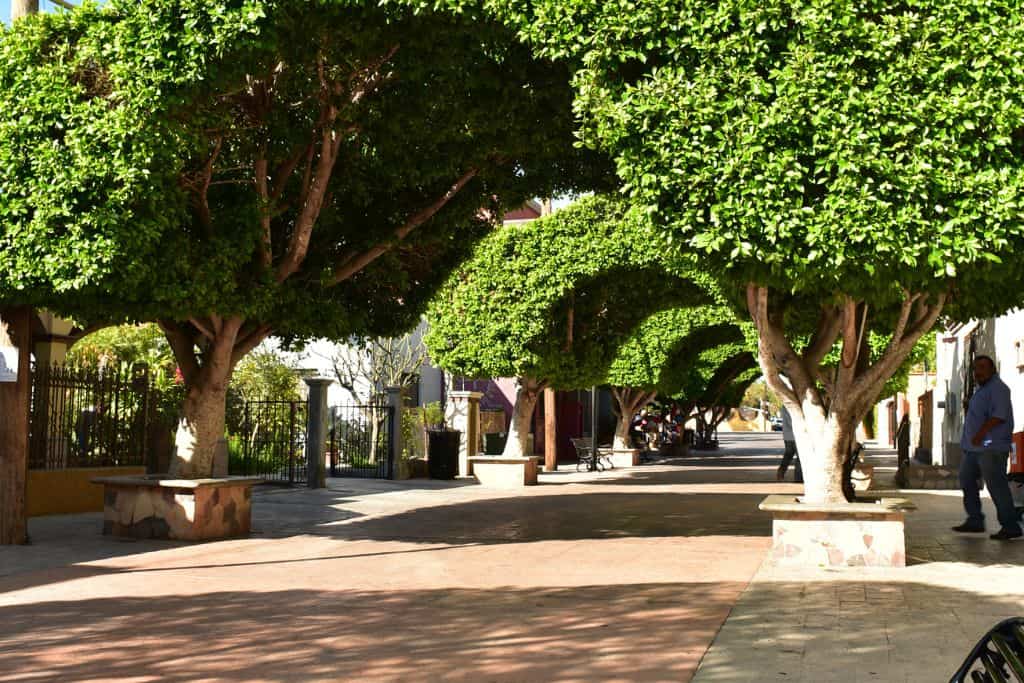
Situated on the Gulf of California (also known as the Sea of Cortez), Loreto is a town of 20,000 located in the Baja California Sur Penninsula. Though the name would imply it’s in Cali, it’s still Mexico.
👍PROS A colonial city center surrounded by restaurants is the hub for local and tourist activity. It has a coastal vibe yet driving just 15 minutes away offers a more remote, hilltop landscape. And yet the local airport makes this entire area quite accessible.
You won’t find any big-box stores here; instead, shopping is at local bodegas and markets. Though there is a full-time ex-pat population, the handful of higher-end housing communities, on the outskirts, accommodate those seeking seasonal retirement in Mexico.
👎CONS For some, this may be too low-key and too small a town on an extended basis. If you need access to mall-type shopping, you might find this a downside.
Baja, in general, is arid and hot, though if you’re a winter part-timer the climate is more moderate. Year-round? Be prepared to handle the heat.
4. Mazatlan
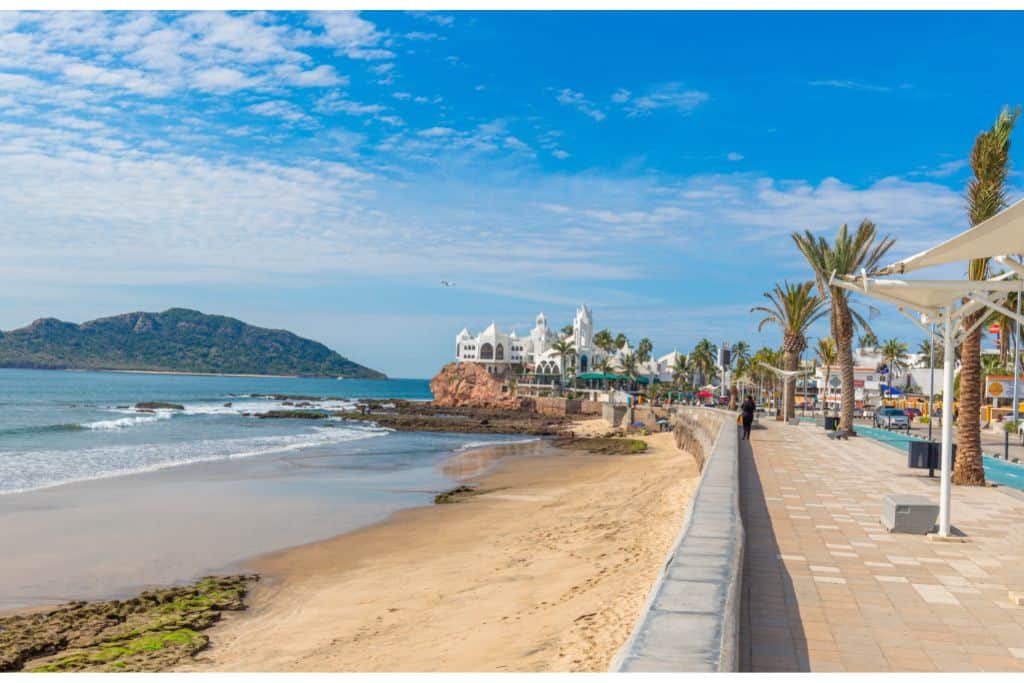
On the far western side of mainland Mexico, Mazatlan sits on the Pacific Ocean just about parallel to the southernmost tip of the Baja Peninsula. If you’re old enough to ponder retirement, you probably remember Mazatlan made its name in the 70s with The Love Boat.
👍PROS This is a major tourist destination so if you like lots of action, nightlife and beaches right in the city, this might be for you. There’s a historical part of town with cute architecture and somewhat of a European feel.
Venture to the perimeter and you’ll find every large store and service on the planet. We found the most well-equipped motorcycle store here to handle our repairs. The restaurants are top-notch, and the service staff is always friendly and extremely helpful.
👎CONS Because it’s a fairly big city, a car, or some mode of transportation, would seem necessary to have a convenient lifestyle.
This is not a slow-paced life but has the energy of a big city…busy and bustling. Again, this may be a negative or a positive just depending on what you like.
5. Oaxaca City
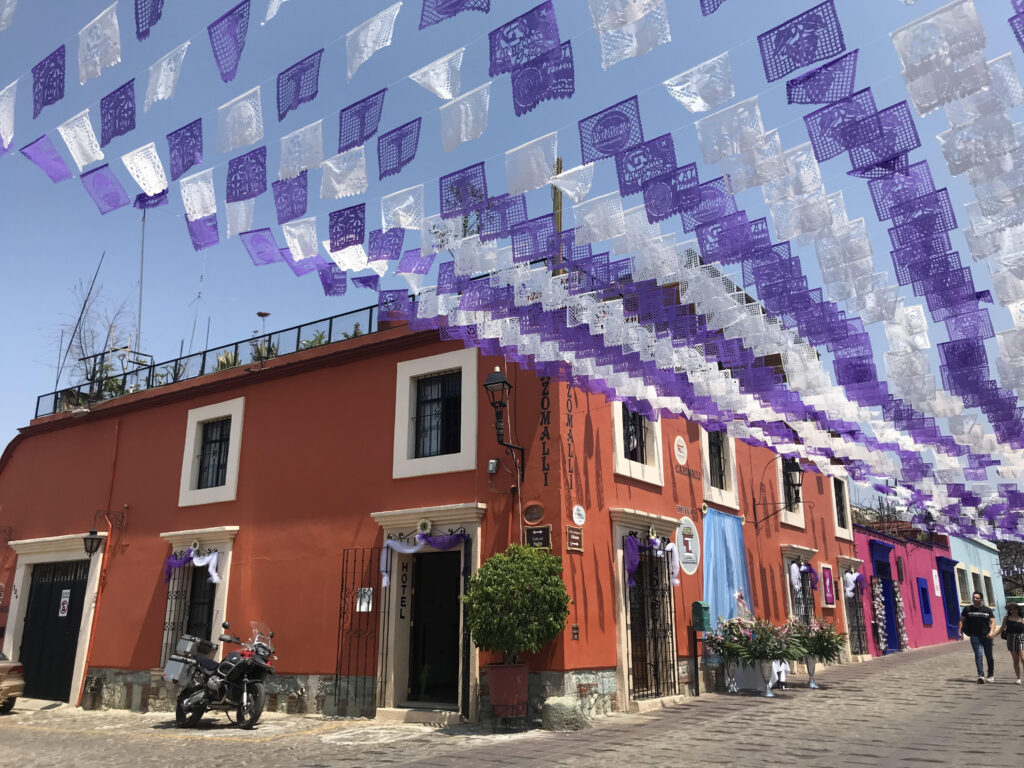
Let’s clear up any confusion from the start. Oaxaca City (usually just referred to as Oaxaca and pronounced “wa-hock-a”) is located in the state of Oaxaca which covers an interior area and spans south to the Pacific Ocean.
Full disclosure: This is one of our favs. We’ll be returning for a deeper dive with a month-long stay during January 2023. So check back for more blog posts on this colonial city.
👍PROS This is a very cultural city, some consider it just second to Mexico City. Lots of outdoor mural art, traditional festivals, parks everywhere, locally produced textiles, and a significant ex-pat community make for a well-rounded experience.
Air travel is easy with many so international flights and within Mexico. You can sniff out a more authentic cobble-stoned neighborhood and still shop at Costco, if you wish. It’s got a little bit of everything.
👎CONS It’s a big city of 300,000 so it’s loud and boisterous. Finding a quiet neighborhood to settle in would be a priority. And because of its size, a car would be handy though there is a fairly well-developed public bus system.
It’s a popular tourist destination so expect to put up with an influx of visitors, especially during holy holidays and Day of the Dead in October. If you’re looking for a slower pace of life, you might need to check out the immediate surrounding areas.
6. Puerto Escondido
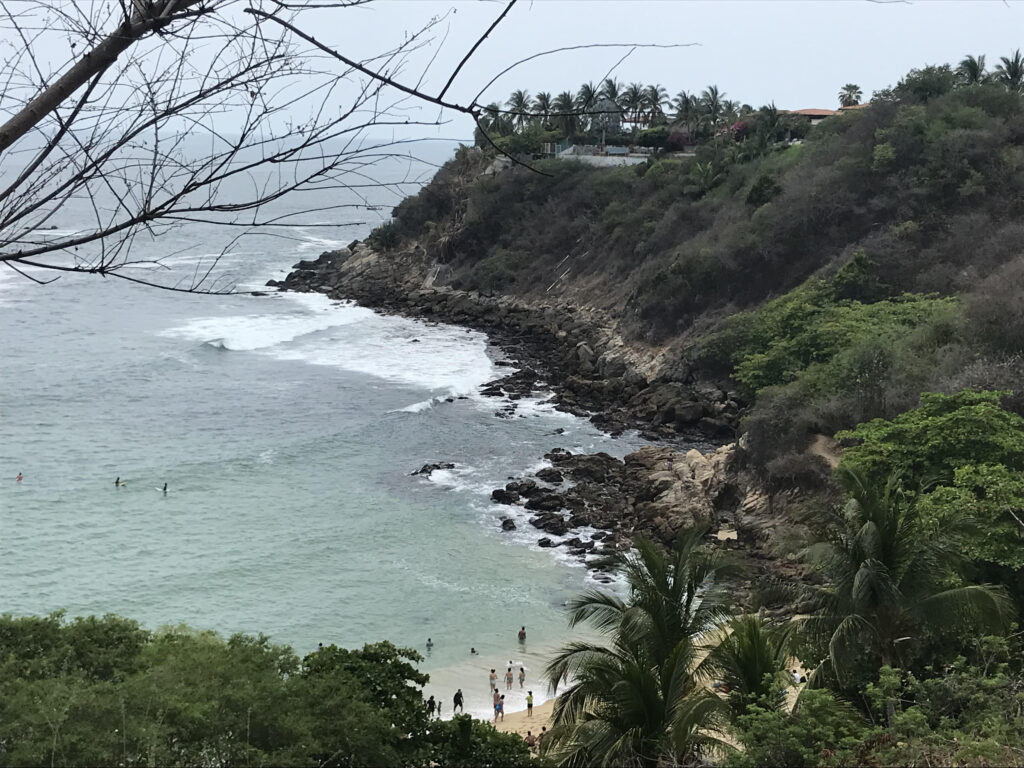
Also located in the state of Oaxaca, this beach town on the southern Pacific coast is known as a surfing spot. While less known than other beach resort towns, it’s becoming more well-known among ex-pats and as a vacation spot for Mexicans.
Ok, so this, too, is one of our favorites. We’ll be staying here in February 2023 to see what it’s like to really live in a beach town. More to come in future blog posts about Puerto being a potential spot to retire in Mexico.
👍PROS Less crowded and not as polished as Cancun and Tulum in the Yucatan, it still has a bit of a hippie vibe. Cool restaurants and bars may be on unpaved, sandy streets and it does have a party scene till the wee hours if you’re into it.
The wide beaches are lined with table-side eateries and the whole town just has a positive energy feel to it. You won’t find condos and high-rises along the beach which is a positive in my book.
👎CONS There are several key beaches and they’re spread out from each other so having some transportation would be helpful. You can always find a collectivo (vans that offer safe, easy-on, easy-off rides around town) which are cheap and everywhere.
One of the things I miss most is that Puerto has no central town square as a communal gathering spot, as is the case in so many Mexican cities. This makes the downtown area a little fragmented. But the community glue is found at the beach, especially at sunset when families and tourists mingle on the sand.
7. Puebla
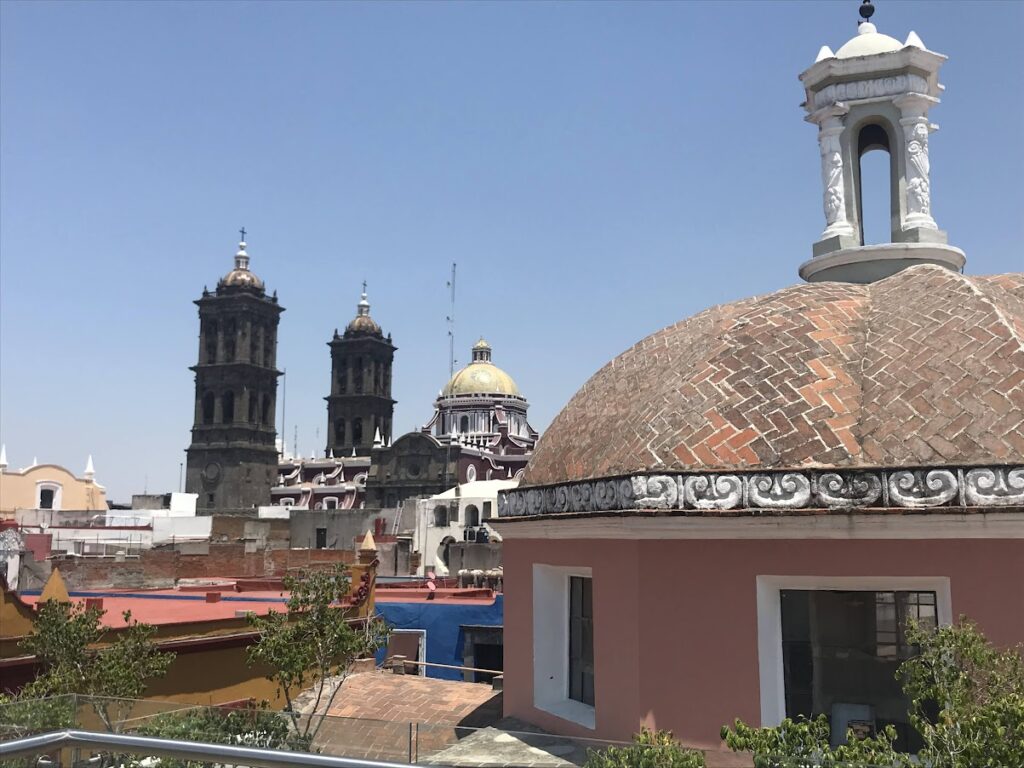
Located just 3 hours southeast of Mexico City, Puebla isn’t on most people’s radar. But it should be. If you don’t need the beach and love architecture and museums, you might be calling this home very soon.
👍PROS This felt like a mini-version of Oaxaca City with its impressive zocalo (town square) and its claim to have 300 churches. A view from a museum rooftop cafe gives you the clear impression they’re not kidding.
It’s a thriving, working-class city with some of the most sophisticated dining we experienced during the entire trip. And at a fraction of what it would have cost in the US!
We used this as a very practical stop, on the motorcycle trip, doing laundry for the first time in 2 weeks 😂, got haircuts (2 of us for $18) and replaced eyeglasses. Ya gotta love the low cost of living.
👎CONS Because it’s not really on the ex-pat hit list, you may not find your ex-pat peeps as readily as you will in other towns. This, however, forces you to get immersed in the local culture and make Mexican friends, and put the Espanol on speed dial.
If you have a hankering for the beach, the Gulf of Mexico coastline will be your closest water and that’s a good 3-4 hour drive. Not a day trip but doable for a weekend.
8. San Miguel Allende
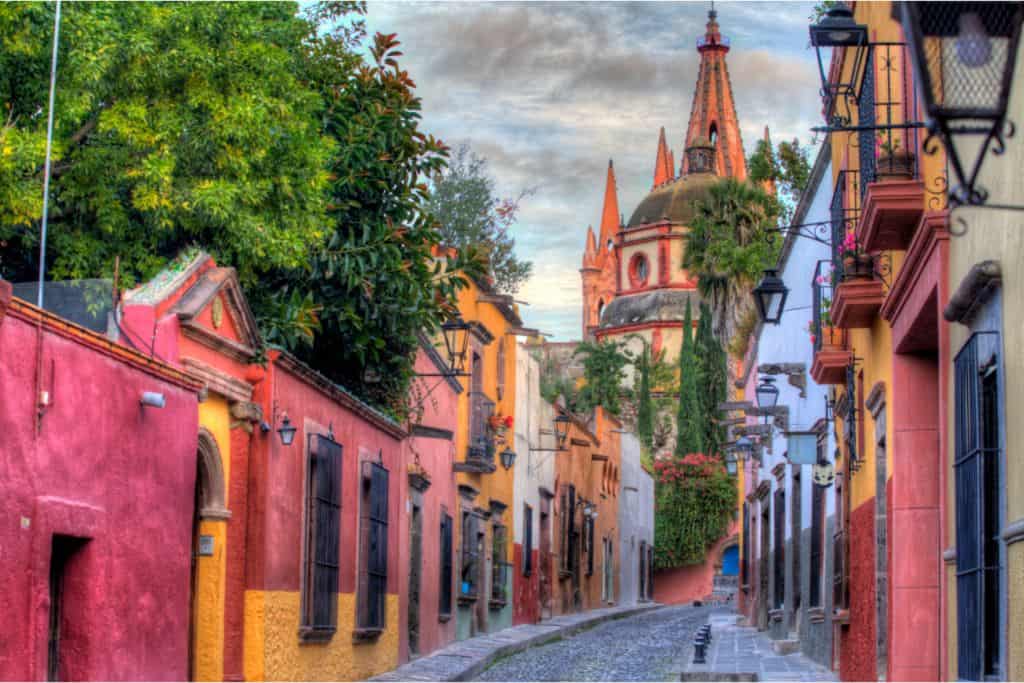
A high desert town, in central Mexico, with an altitude of 6000 feet, SMA has been a long-time Mexican retirement favorite since the ’30s. And it’s the only town on this list we did not visit, but I’m including it simply because it’s so popular, they must be doing something right.
👍PROS The star attraction here is the charming colonial architecture; it’s actually a UNESCO World Heritage Site. Fabulous restaurants, a thriving artisan community, and a huge retired ex-pat presence (and more recently foreign families) mean it’s a real melting pot.
The almost constant mid-80s, dry temperatures are also a big draw. Most who live here also cite safety as an important factor in choosing SMA.
👎CONS We didn’t include stop because it just didn’t work with our itinerary, but more so because we knew it was an incredibly ex-pat-heavy town. While I wouldn’t argue that it’s adorable, our interest is in finding a place that hasn’t been so discovered.
Like other towns, such as Ajijic, with large retiree communities, the price of real estate has gone crazy. And speaking of real estate, it’s always a good idea to do lots of research on this subject before taking a trip.
🏘️ Real Estate Heads Up 🏘️
If you are looking for property, to serve as a residence and a solid investment, I highly recommend joining RETA (Real Estate Trend Alert), a service from International Living.
RETA is a members-only group that provides access to best-in-class real estate deals (not only in Mexico but worldwide) and below-market pricing. Because of their long history working with developers, they bring deals to the group proven to be great investments.
I think it’s actually a good use of time and money to get advice from the pros. And it’s got a free 3 month trail period so, if it’s not for you, you’re not out anything.
☞ Sign Up for a Free 90 Trial of RETA
9. Sayulita

Just a short drive from well-known Puerto Vallarta on the Pacific coast, Sayulita is a bohemian chic beach town (with its share of tourists) with young energy to it.
👍PROS The vibe here is definitely flip-flops and shorts. While the center of town is the social hub, we saw many homes being built at slighter higher elevations (with great views) just walking distance from downtown.
Life revolves around the beach for local families and visitors alike and there are a few other similar towns nearby that are not quite as discovered. Close proximity to Puerto Vallarta means easy flight access in and out.
👎CONS Being on the far western Pacific side of Mexico, it’s a draw for Californians which has driven up prices more compared to other beach towns.
If you’re looking for a retirement-type community, this really wouldn’t be it. It’s an eclectic mix of vacationing families, 20-somethings passing through, and the surfer crowd. This can be a downside or an upside, depending on how you view it.
10. Todos Santos
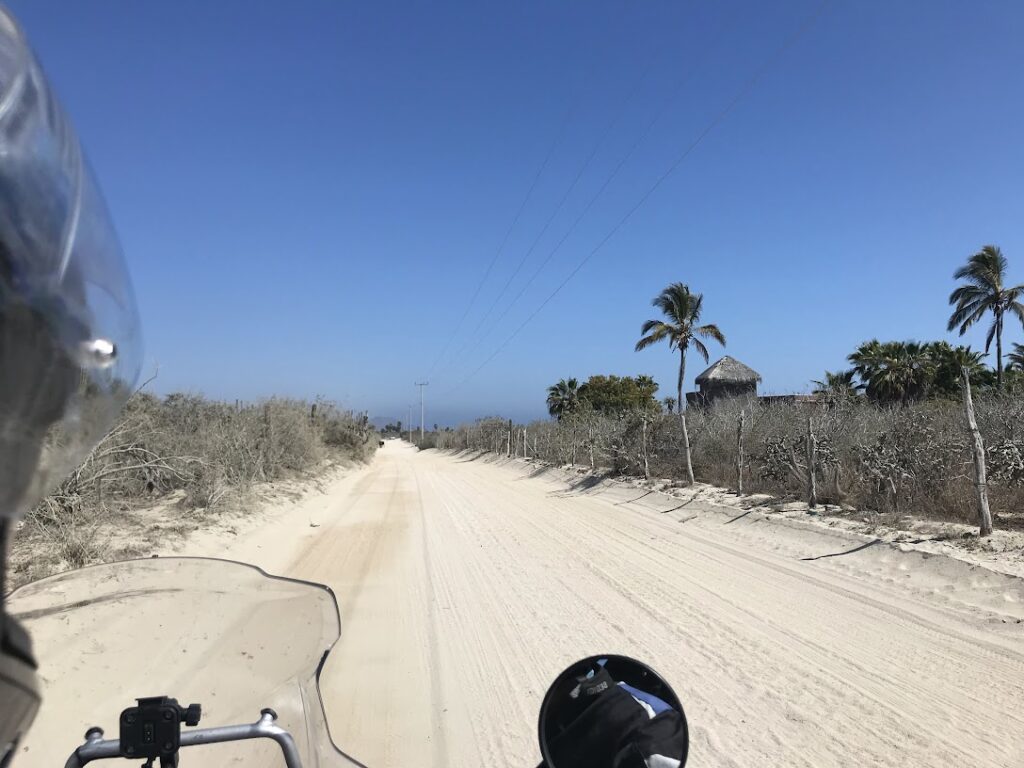
On the southern Pacific side of the Baja Peninsula, Todos Santos is where sandy roads meet Architectural Digest.
👍PROS If you’re looking for a more dune-like beach town to retire in Mexico, this might suit you just fine. Do not expect a cookie-cutter planned ex-pat community look here. The rustic coastal landscape is dotted with distinctive-looking homes for an understated hip feel to the town.
There are lots of cool things to explore on what looks like a road to nowhere. One of the best lunches we had (literally toes in the sand) was at a place with absolutely no signage. But yeah, we found it.
👎CONS The downtown shops and restaurants cater to a higher-end crowd so this is not a town for bargain hunting.
Geographically speaking, it’s quite spread out so a vehicle would be essential. Cabo San Lucas, at the very southern tip of Baja, is an hour away from the closest airport.
11. Zihuatanejo
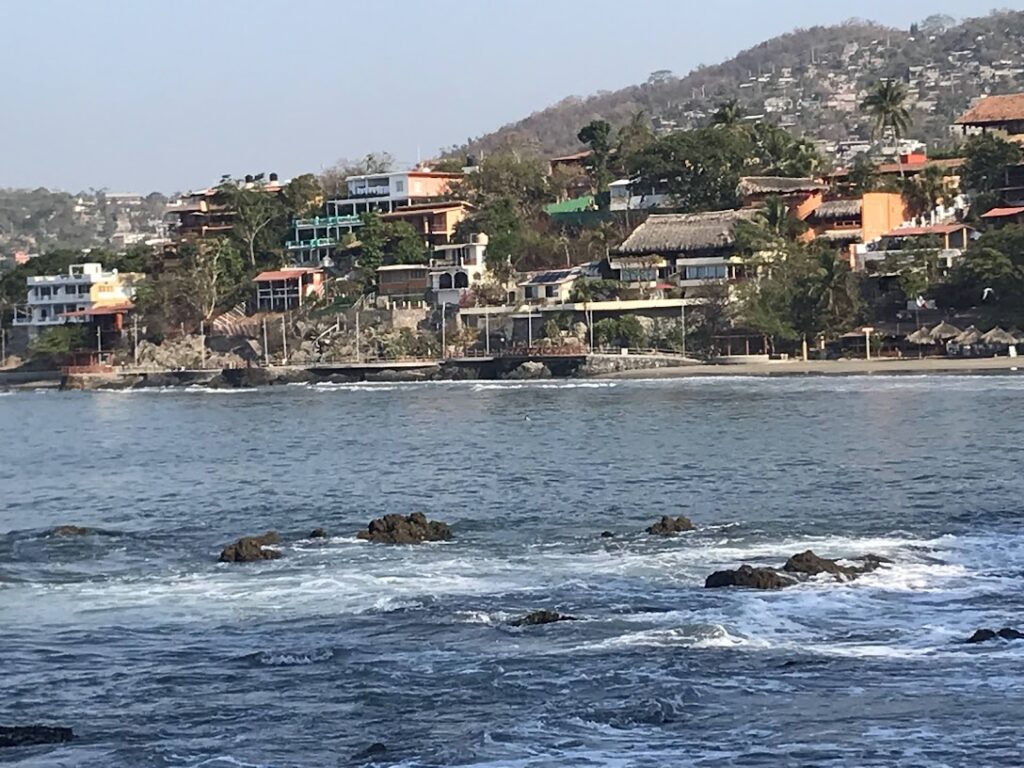
Zihua, as it’s referred to, has been a long-time vacation spot on the southern Pacific coast. Nestled around a bay, the low-lying traditional Mexican look is a juxtaposition to its neighboring town, Ixtpaxa, which boasts a modern, resort atmosphere.
👍PROS This is a walkable town with a very authentic “mercado” in the center where locals and visitors mix and mingle. For a well-known vacation spot, we found the price to be right. Our bungalow overlooking the bay was just $50/night.
Unlike many other beach towns on the Pacific, the bay location means the water is pretty much dead calm. Great for when the grandkids visit!
👎CONS An evening walk along the beach promenade is the highlight of nighttime activity. If you’re looking for roaring nightlife, this may be too slow for you.
In general, it’s a quiet relaxing place. If you want other diversions, besides sun, sand, and water, then you’ll head over to Ixtapa for golf courses and other amenities.
Map Of Where To Retire In Mexico
Where Do Most Americans Retire in Mexico?
From talking with ex-pats throughout our trip, here are the primary factors influencing people’s decisions on where to retire in Mexico:
- Climate – You will find more moderate, cooler temperatures year-round in higher elevation towns like San Miguel Allende and Oaxaca City. If you like warmer weather and don’t mind some humidity, then beach towns like Puerto Escondido and Sayulita may work for you.
- Safety – Feeling secure for yourself and your property is of primary importance. All of the towns we visited checked that box. More on this topic below.
- Access to healthcare and transportation – Larger towns will typically have more and better healthcare services. If this is important to you, then Mazatlan and Ensenada may fit the criteria or Ajijic, which is close to Guadalajara. These same larger towns make air travel easier without lots of connections.
- Cost of living – For most people, moving abroad means reducing living expenses. Lesser-known retirement places, like Puebla and Loreto, are cheaper than towns like San Miguel Allende.
- Access to shopping and other amenities – If you want similar products and services you’ve always had, then towns like Ensenada and other Baja locations might be for you. These are more Americanized and may be a good transition when retiring to Mexico.
Where In Mexico Is It Safe To Retire?
This was the number one question we got from friends and family when we announced our epic motorcycle trip…”Mexico isn’t safe, is it?”
I can honestly say we never once felt intimidated or fearful in any of the towns we visited. As with any travel, you use common sense. We did not travel at night nor did we hang out in sketchy parts of town.
There are regions of Mexico known to be cartel areas and we purposely avoided them. Most are not in areas where ex-pats are looking to retire anyway.
Yes, there has been gang violence in Tulum and Cancun (both big resort areas in the Yucatan) but they have been isolated incidences and are just that…gang-related.
The Mexican people were always warm and welcoming. I can’t say enough good things about their sense of hospitality and helpfulness. I would have no hesitation retiring to Mexico based on the safety factor.
What Is The Cheapest Place to Live In Mexico On The Beach?
Moving to a beach town seems like a bucket list dream for many people. But because beach towns are also popular with tourists, the rents can be pricey.
Of the coastal towns we visited, I found prices to be most reasonable in Zihuatanejo, Mazatlan, and Puerto Escondido (if you’re willing to be on the outskirts).
Of course, renting an Airbnb by the week or even monthly is a different pricing situation than if you’re renting year-round. If you’re on a week or month-long scouting trip, check out the rents for long-term leases of furnished and unfurnished places. This is really how you make a comparison of costs.
If you’re looking to buy property, that depends on so many factors. Are you buying new construction or do you want a traditional hacienda house in an established neighborhood? This is why using the RETA group is a good idea. You need access to the facts to make a smart decision.
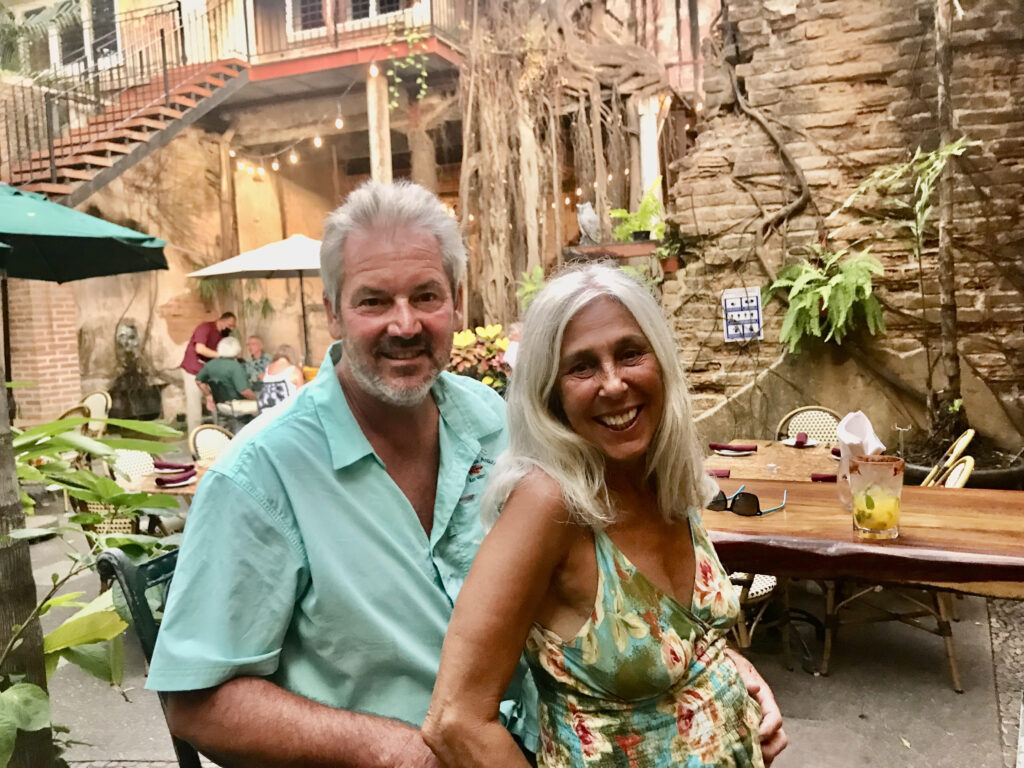
Conclusion: Where To Retire In Mexico?
Everyone has a slightly different vision of what retirement in Mexico might look like.
Some people do it part-time, others full-time. One of the nice features of spending extended time in Mexico is that you can stay for up to six months just with the everyday tourist visa. Compare that to most Western European countries where the maximum stay is only 90 days with a basic tourist visa.
For us, we are spending January 2023 in Oaxaca City and in February we’ll head south to the coast to Puerto Escondido. These are two very different places and that’s exactly why we are going to them. To see what we like and don’t like.
Eventually, it becomes clear what’s important to you and you begin taking towns off the list. But you really can’t do this as an armchair traveler.
You have to experience a place firsthand before you know if it’s right for you.
So what are you waiting for?
WANT SOME HELP PLANNING YOUR NEXT TRIP?
If you don’t have the time or patience to plan your next trip, then let me help.
I offer a Travel Planning Service customized to your travel style and desires. I do the planning, you do the booking then it’s up to you to have all the fun.
Fill out the form below; I will reach out to you within 48 hours to schedule a free 15-minute call. You can get to know me and decide if we’re a good fit.
Talk soon, Donna
